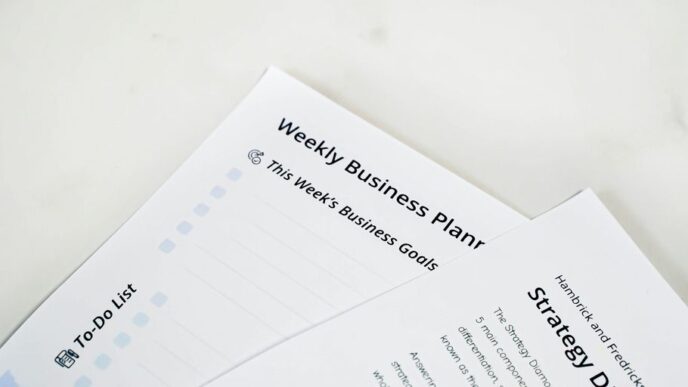
I see this far too often: earnest company joins me on an introductory call seeking advice on how to grow revenue and profit quickly. I ask them how they arrived at their current price for their product/service. Some fuzzy answer emerges. This gives me the opportunity to share my favorite “growth hack”—increase prices. As long as the company is open-minded enough to fully hear me out and willing to develop a game plan with me, prices can be increased shortly with no downside risk. I’ll say that again: no downside risk.
Look, I’m really lucky to be a part-time Entrepreneur-In-Residence (EIR) at 500 Startups, one of the most active seed-stage investors on planet earth. From my vantage point as their longest-tenured EIR (4 years and counting), I’ve seen all sorts of marketing and sales efforts succeed—and fail—at over 50 different companies in Silicon Valley (I’ve advised each company on a weekly basis for 4 months at a time, so we go pretty deep). I’m also invited to teach and coach at various bootcamps around the world, which lets me meet one-on-one with so many companies—I stopped keeping track after 100. I say all this not to brag but to illustrate how I’ll see patterns, and I want companies to avoid making the same mistakes others have made for you already.
Underpricing is most definitely a pattern. So how do you know if you’re underpriced or not? Here are five quick ways to figure it out and fix it.
- Fish for budget when questioning your prospects.
Asking questions at the right time in the right way can reveal clues on your prospect’s budget. This tactic also works magic when you’re trying to figure out if you’re underpriced. For example, if you’re a software company, you can ask, “What are you currently using?” or “What are some other tools you’re considering?” Based on the answer, you can estimate the prospect’s budget and check if you’re leaving money on the table by requesting too little.
- Do the math to make sure your price covers the cost of sales.
As a general rule of thumb, cost of sales is calculated like this:
Cost of customer acquisition ($) + Salesperson’s time ($) + Onboarding specialist’s time ($) + Customer success time ($) + Variable cost to make and deliver your product/service ($)
Remember: time is money, so if your price is lower than the cost of sales, you’re losing money. Raise prices, repackage your product to justify a higher price, cut costs through automation, increase average order value with upsells and cross-sells, increase the lifetime value of each customer by adding a subscription, or do something else to collect more money from each customer. Or risk running out of cash.
Here’s a quote from Don’t Just Roll the Dice (a short & free eBook I recommend to many advisees who are thinking/rethinking their pricing strategy) that beautifully illustrates this concept:
“If the price your customers are willing to pay is lower than what it costs you to sell your software, then you haven’t got a business and your product will flop. You need to cut your cost of sales, or change your pricing mechanism so customers end up paying more over the lifetime of the product.”
- Ask yourself: “Do I know the maximum price my prospect can sign off on?” Remember, people in different positions have different powers to sign off on checks.
Say you’re selling to a low-level manager. Will he be able to approve a purchase that’s $1,000/month? Unlikely. At $1,000, he’d probably have to get his boss to approve. It’s safe to assume that such low-level managers can only sign off on purchases priced between $10 and $1000. What if you’re selling to the manager’s boss, say, a Vice President? They can approve a purchase between $1,000 to $5,000. But they’ll need to get the CEO’s approval to pay $25,000.
So clearly, pricing brackets exist. A common mistake is pricing products/services on the lower end of the bracket instead of the higher end of the bracket. Sometimes my advisee will object: “But my competitor is priced low! Won’t the Vice President walk away because I’m too expensive?” I highly doubt it unless the Vice President happens to have a quote from your competitor sitting on her desk. The only competitors that matter are the ones your Vice President brings up in your interactions with her. Chances are, she won’t know who your competitors are, which means she won’t know other prices. You have a captive audience when you’re meeting with that Vice President and you can get her to sign on the dotted line first. People overpay all the time because they aren’t willing to shop around.
True story: I walked out of a board meeting recently in San Francisco where a company was rebuilding its sales team. That may sound bad, but trust me, I was thrilled. You see, the company priced low early on—so low they eventually realized the cost of sales was higher than the price. They increased prices 10x overnight as a hail-mary to save the company. It worked. Turns out the buyers, VPs of Marketing and CEOs, had the power to approve much larger purchases. They just never asked for more money until desperation forced them to. Now they’re doubling down on the strategy and rebuilding the sales team to sell at a far higher price.
- Ask yourself: “Am I ‘selling from zero’ or is my prospect anchored on ‘reference points’? Does my answer to this question influence how I set prices?” It should.
No duh—it’s going to be harder for you to charge more if your competitors are well-known in the marketplace. Especially if prospects perceive your product/service to be like that of your competitors. Your competitors are the reference point prospects use to determine if your price is fair. One famous example is Microsoft: in 1982, it released its DOS 1.0—an operating system for a mass-market computer—for $50. Since it was an entirely new category back then, there were no reference points for consumers to compare to. So $50 was accepted as a fair price, setting the industry pricing standard. When IBM launched OS/2 1.0 in 1989 for $340, it received little response from the consumers because it charged too much compared to the reference point set by Microsoft.
If you’re selling a product/service that’s unfamiliar to the marketplace, you’re no longer boxed in by reference points. I call this “selling from zero.” My favorite way to sell such products/services is to ask the prospect, “How much is this worth to you?” You may be surprised by how the prospect answers because the prospect may offer far more than you were expecting. This way of setting the price works when you’re selling from zero and it doesn’t work so well if you’re boxed in by reference points.
- Secure low-risk opportunities to test prices.
As Don’t Just Roll the Dice puts it, “Product pricing is as much art and craft as it is science.” In pricing too, it’s important to go beyond theory and take up a “just do it” attitude. There is no need to feel huge pressure in setting the initial price—it can always be tweaked as you go.
Before unleashing your new price on your most valuable prospects, deliver the price to prospects you can afford to lose. This is why having a steady stream of traffic/leads lets you iterate pricing faster.
Most importantly, you must always pay attention to how your prospects behave when a price change is made. I always prefer delivering new prices over the phone. If they stop buying, rethink your pricing. You can always stay on the phone and lower the price if you really need to win the deal. It’s easier to lower prices than to raise them. So start high and expect prospects to push back. If they’re not pushing back, it probably means you’re underpriced.
Raising prices may feel scary, but never forget: the worst thing the prospect can say is “no.” Your feelings may be a little hurt and that’s no big deal. Back at Kissmetrics—where I led customer acquisition & customer success before and after it raised a Series A investment round from some name-brand VCs—we were increasing prices several times a year. One of my current businesses selling online courses increases prices at least twice a year, and plenty of companies where I’ve been an official advisor have done the same under my guidance. Not one crashed and burned after increasing prices.
One last hot tip: no matter what you do, make sure your go-to-market strategy supports your price. If your brand is positioning itself as the lowest-priced provider, like Spirit Airlines and Frontier Airlines, you need to reinforce that brand story with your pricing. In the same way, if your brand is a high-priced provider, you must complete the brand story by pricing high to support your position in your prospect’s mind. Just as Don’t Just Roll the Dice explains, “Whatever price you choose, the signals it sends need to fit in with your brand, and your brand needs to fit in with your reality.”
If you keep these five risk-free tactics close to heart, money-making will no longer be a superpower but something that can be as easily done as changing some numbers.
Nemo Chu is an Entrepreneur-In-Residence at 500 Startups. He was employee #2 at Bloomfire, which he helped launch at SXSW (acquired 20 months after launching). Then he joined Neil Patel and Hiten Shah at Kissmetrics. By day, he was their first Director of Customer Acquisition & Customer Success, and by night he built a 7-figure eCommerce business in 1 year as solo founder. He now IPOs small- and medium-sized enterprises as co-founder of IPO Architects and he moonlights as the most expensive small business coach online.
NOTE: NEMO CHU IS A GUEST POSTER AND ANY VIEWS OR OPINIONS REPRESENTED IN THE ABOVE POST ARE PERSONAL AND DO NOT REPRESENT THOSE OF 500 STARTUPS OR ANY OF ITS STAFF OR AFFILIATES UNLESS EXPLICITLY STATED. ALL CONTENT REPRESENTED ABOVE IS PROVIDED FOR INFORMATIONAL PURPOSES ONLY. 500 STARTUPS MAKES NO REPRESENTATIONS AS TO THE ACCURACY OR COMPLETENESS OF ANY INFORMATION CONTAINED IN THE ABOVE POST. NO LIABILITY CAN BE ACCEPTED FOR ANY ERROR OR OMISSIONS. UNDER NO CIRCUMSTANCES SHOULD ANY OF THE ABOVE CONTENT BE CONSTRUED AS LEGAL, TAX OR INVESTMENT ADVICE FROM 500 STARTUPS OR ANY OF ITS AFFILIATES. 500 STARTUPS DOES NOT GUARANTEE ANY FUTURE RESULTS FOR ANY DECISIONS MADE BASED IN WHOLE OR IN PART ON THE CONTENT OR INFORMATION CONTAINED IN THIS POST.
UNDER NO CIRCUMSTANCES SHOULD ANY INFORMATION OR CONTENT IN THIS POST, BE CONSIDERED AS AN OFFER TO SELL OR SOLICITATION OF INTEREST TO PURCHASE ANY SECURITIES ADVISED BY 500 STARTUPS OR ANY OF ITS AFFILIATES OR REPRESENTATIVES. UNDER NO CIRCUMSTANCES SHOULD ANYTHING HEREIN BE CONSTRUED AS FUND MARKETING MATERIALS BY PROSPECTIVE INVESTORS CONSIDERING AN INVESTMENT INTO ANY 500 STARTUPS INVESTMENT FUND.











